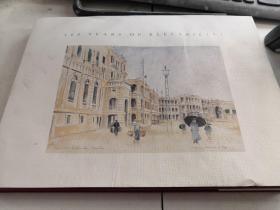
100 Years Of Danish Modern: Vilhelm Lauritzen 进口艺术 丹麦现代风格100年:威廉劳瑞森
¥ 300 九五品
仅1件
作者Christian Bundegaard 著
出版社Strandberg Publishing
ISBN9788792596178
出版时间2022-10
装帧精装
页数272页
上书时间2023-10-25
- 最新上架
商品详情
- 品相描述:九五品
- 商品描述
-
出版社:Strandberg Publishing (2022年10月27日)
语言:英语
精装:272页
ISBN-10:8792596177
ISBN-13:9788792596178
尺寸及商品重量:240 x 320 x 32mm | 1,540g
(页面信息仅供参考,具体以实物为准)
●内容简介——
Vilhelm Lauritzen(1894-1984)是丹麦当时重要的建筑师之一,也是丹麦现代主义重要的开发者之一。今天,他的一些项目仍然是一种新的和革命性的建筑的先例,其形式服从于功能。Vilhelm Lauritzen的方法是关于可用性的。一个例子是1930年代哥本哈根的一个机场航站楼,当时还没有机场设计类型。作为一个功能主义者,他将建筑分为空侧和陆侧;入口和交通沿线在陆侧,航空和登机口在空侧。时至今日,这种设计在世界各地的机场中仍占主导地位。
本书通过维尔赫姆-劳里岑建筑事务所过去100年的故事,讲述了丹麦福利国家和它的现代主义建筑的故事。本书由《芬恩-尤尔》的作者撰写。生活、工作、世界》(Strandberg Publishing and Phaidon 2018/2019)的作者。
Vilhelm Lauritzen (1894-1984) was one of Denmark’s most significant architects of his time and one of the most important developers of Danish modernism. Today, a number of his projects remain precursory examples of a new and revolutionary architecture where form follows function. Vilhelm Lauritzen’s approach was all about usability. An example is the first airport terminal in Copenhagen from the 1930’s when there was no airport design typology. As a functionalist, he divided the building into airside and landside; entrance and traffic along the building on landside with aviation and gates following airside. Still today, this design remains predominant of the airports around the world.
This book tells the story of the Danish wellfare state and it’s modernistic architecture told through the story of Vilhelm Lauritzen Architects the last 100 years. Written by the author of Finn Juhl. Life, Work, World (Strandberg Publishing and Phaidon 2018/2019).
相关推荐
-

100YEARS OF FASHION
九品北京
¥ 88.00
-

100 YEARS OF ELECTRICITY
九五品娄底
¥ 150.00
-

100 years of fashion
八五品重庆
¥ 70.00
-

100 years of fashion
八五品亳州
¥ 88.00
-

100 YEARS OF ELECTRICITY
九品北京
¥ 150.00
-

100 Years Of Menswear
八五品衡水
¥ 282.00
-

100YEARS OF ELECTRICITY
九品北京
¥ 130.00
-

100 YEARS OF ELECTRICITY
九五品娄底
¥ 149.00
-

100 YEARS OF FLIGHT
九品晋中
¥ 320.00
-

100 years of fashion
全新北京
¥ 129.90
— 没有更多了 —













以下为对购买帮助不大的评价